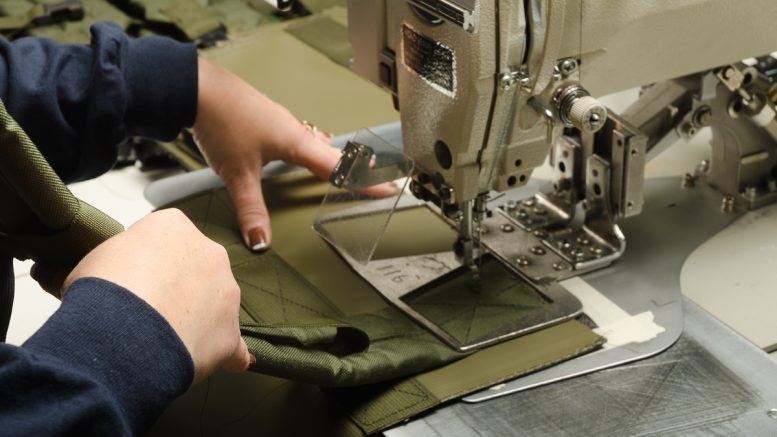So you’ve finished designing a new piece of portable equipment. Now it’s time to figure out how to carry it. That means designing a custom carrying case—a step that often gets underestimated but can make or break the product’s usability and protection in the field.
At Fieldtex, we’ve been prototyping and manufacturing soft-sided carrying cases for over 50 years. We’ve seen hundreds of approaches from engineers and product designers entering the case design phase, some brilliant, others a little off the mark. Through it all, we’ve learned what separates a truly functional case from one that just looks good on paper.
If you’re starting to develop a custom carrying case, use this as your practical checklist. These five expert tips will help ensure your design is effective, scalable, and ready for real-world use.
1. Partner Early with a Prototyping and Manufacturing Team
One of the most common mistakes we see? Treating the carrying case as an afterthought. The earlier you involve an experienced carrying case manufacturer, the more design insights you’ll unlock. From fabric selection to layout logic, our team brings experience across medical, military, tech, and industrial markets to guide the process.
As a trusted cut and sew contractor, we bring a hands-on approach to prototyping and iterative development. Working with textiles allows us to tweak designs quickly and cost-effectively based on your product’s real-world needs.
Case in Point: A medical equipment company came to us after designing a sleek carrying case for a portable ultrasound device. They were ready for production—until we received the sample and noticed two issues: the device barely fit, and there was nowhere to store the power cable. We proposed subtle design adjustments: increased internal dimensions and an added 1-inch pocket for accessories. It preserved their design intent while dramatically improving field usability.
2. One Size Never Fits All: Design Around Your Equipment
Pre-made cases rarely offer the protection and organization complex devices require. Start your design by analyzing what you’ll carry: How fragile is it? Does it disassemble? Are there cables, power supplies, or accessories? Designing a custom carrying case around the exact components ensures optimal protection and workflow in the field.
Example: An engineering team needed a custom case for a modular radio antenna that could be assembled and disassembled multiple times. Initially, they asked for a simple bag with a few pockets. But once we saw the volume and variety of components, we knew that wouldn’t work. We developed a foam-lined, hard-walled case with individual slots for every part. Feedback from the field: It was easier to use than the cases they had for earlier antenna models.
3. Don’t Skip Case Style and Carrying Method
How your case is carried matters. Backpack? Shoulder bag? Briefcase-style? Rolling hard case? Your choice impacts ergonomics, protection, and user fatigue. Think about the environment: Is it going into hospitals, oil fields, or aircraft? Should it be waterproof, soft-sided, or crushproof?
A good starting point is to choose a form factor that matches the context of use, then adapt from there. Even having a general idea (“something like a messenger bag”) is valuable input at the design stage.
Also consider the flexibility of materials: when you buy a plastic or metal carrying case off the shelf, customization is limited. Changing the mold for a hard case can be costly and time-consuming. In contrast, soft-sided carrying cases offer far more flexibility. Adding a new pocket, zipper, or access point is simple when working with textiles, making soft-sided options ideal for iterative product development or niche field needs.
4. Precision Fit Requires Precision Measurements
Accurate measurements are the foundation of every good carrying case. Always account for the padding and the exterior material thickness when providing dimensions. A snug interior fit is critical for delicate or high-value devices, but too tight, and it becomes a hassle.
If you’re considering a foam insert, it’s even more important to get dimensions exactly right. Inserts are custom-cut to cradle your device, so tolerances must be tight for both protection and usability.
We recommend sending actual units when possible during prototyping. If that’s not feasible, share detailed dimensions, CAD files, and photos—and double-check them.
5. Plan for Production from the Start
Even if you’re starting with a small pilot run, make sure your case design can scale. At Fieldtex, we offer short runs (starting at 25 units) which are ideal for test deployments. But we always design with long-run production in mind—meaning the materials, stitching, inserts, and construction can scale without surprise costs or delays.
Custom case design is about more than zippers and straps. Done well, it’s an extension of your product itself.
Next Steps:
Ready to develop a custom carrying case for your device? Explore examples of Fieldtex carrying cases here or get in touch to start your prototype.
Whether it’s a medical diagnostic kit, a deployable antenna, or sensitive instrumentation, the right case makes all the difference in how your product performs in the real world.

